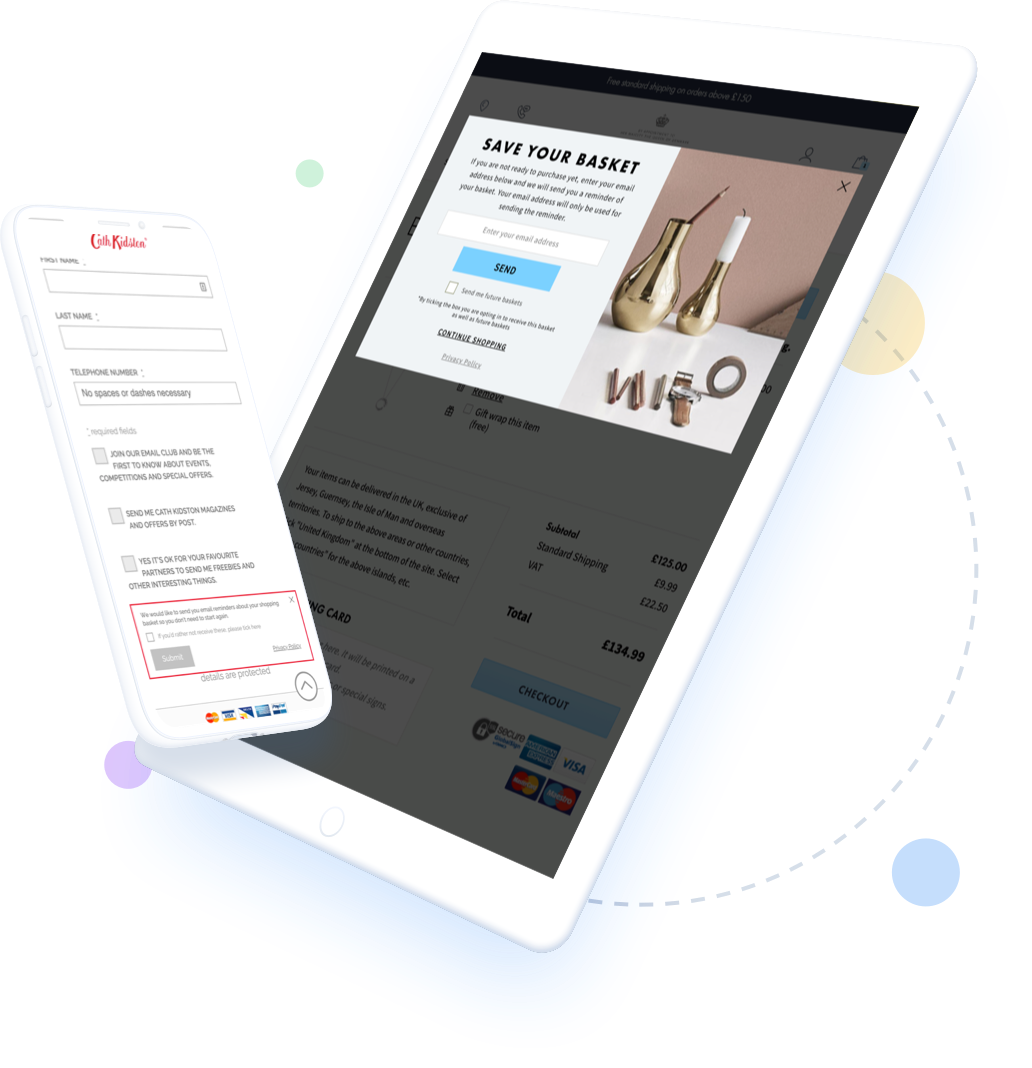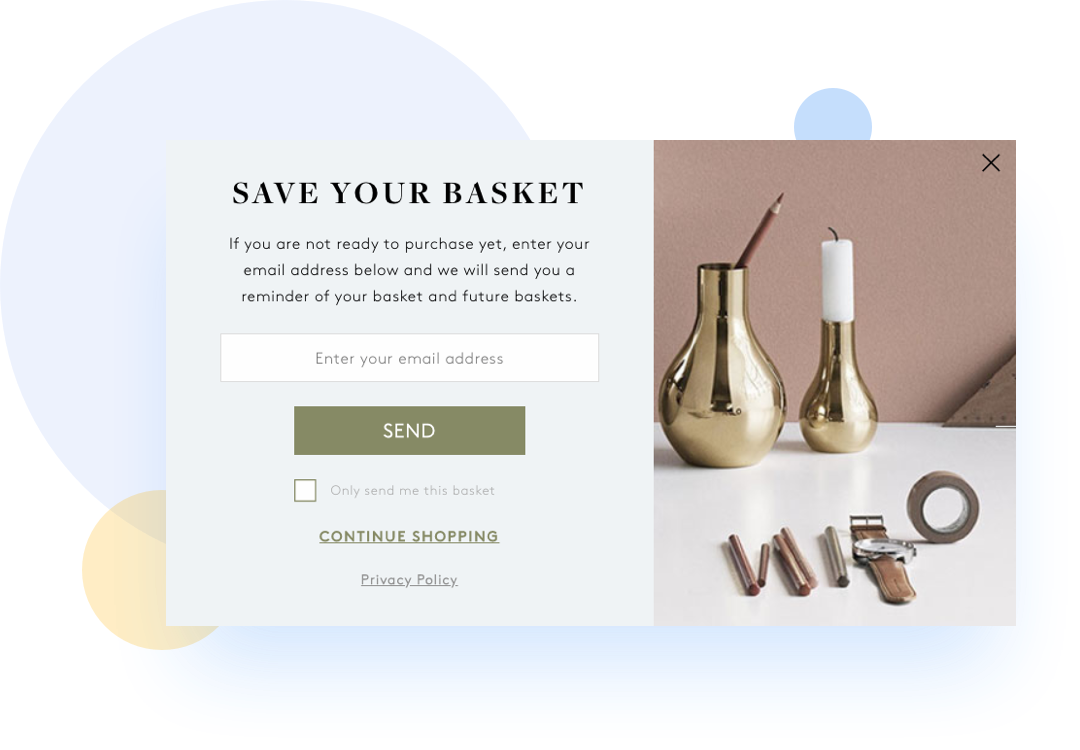Marketing Consent Management
Ensure your marketing campaigns are compliant
Marketing Consent Management can help to supercharge your SaleCycle campaigns as well as helping you to manage compliance for your own marketing messages.
Talk to usHow it works
By using all, or a combination of these methods, the Marketing Consent Management service will store and remember your visitor’s permission status to help keep your marketing campaigns legislatively compliant.


On-Site Capture
We’ll capture permission at the point where an email address is submitted.
On-Site Display
When a visitor fills in an email capture field on your site, we’ll trigger a notification-style display to gather a consent status for that email address.
In-Site Embed
When an email address is entered in a capture field, we will check the consent status in our marketing permission service and embed a consent-capture checkbox or toggle into the HTML of your site.
About Marketing Consent Management
What Is Marketing Consent Management?
With the introduction of legislation around the use of consumer data, such as GDPR, marketers need to ensure that their collection of email addresses and the use of data is compliant.
In addition to this, it’s good practice to ensure that customers provide clear consent when they sign up for marketing emails, or customer retention emails. This can help you to build a more engaged database for your cart abandonment emails.
When a visitor enters an email address on your website, SaleCycle’s Marketing Consent Management service not only tracks email marketing statistics, but instantly checks if you already have valid consent for this specific visitor.
Based on the results of this check, if relevant, we can seamlessly embed a consent-capture checkbox or toggle into the HTML of your site. Checkboxes, sliders, toggles; the choice is yours and they can all be customised to match your brand.
The visitors’ choice to opt in or not will be instantly recorded as their permission status and used immediately to manage your marketing campaign targeting.
This removes the need for static checkboxes or messages that are shown to every visitor no matter their current consent status with you, their location, or how often they visit. This flexibility allows you to tailor the user experience for your visitors, displaying consent options subtly and only when needed.
Our service is totally customisable, with the ability to change the messages shown, and who sees them, at any given time.
Using the visitor’s location, as well as data on customer behaviour, we can present the correct compliance message, and tailor the content to show the message in their regional language, as well as personalised individual visitors’ online experiences.
If our Marketing Consent Management service recognises that a visitor is already opted-in, nothing will be displayed (or an opt-out message can be if legislatively required). If opt-out status has previously been obtained, this presents the opportunity to have that changed.
And if no consent status is present, it’s the perfect time to ask for it. Nothing will show to people not affected by data privacy legislation which will certainly clean up the checkout process, removing an unnecessary step for many.
FAQs
Why Is Consent Management Important? – Consent management is a system or process for allowing customers to determine what personal data they are willing to share with a business. It has become so important worldwide because of the lawful requirement for websites to obtain user consent for collecting data through cookies while browsing.
What Is Direct Marketing? – Direct marketing describes any kind of sales or promotional material aimed at an individual, such as onsite messaging and personalised emails, as opposed to mass marketing (an ad in a magazine, for example), where the advertisement isn’t aimed at anyone in particular.
What Are The Rules On Marketing Emails or SMS? – Data protection laws apply to B2B marketing, where personal data is used (such as the name or phone number of a business contact).
The person you’re planning to email or text could be an individual customer, sole trader or in a certain type of partnership. If this is the case, you’ll need to have their consent before you can market to them (unless the soft opt-in applies). You should also let them choose how they want to hear from you.
For any marketing emails or text messages to people you must say who you are and tell them how to opt-out. You must do this on every such message that you send.





